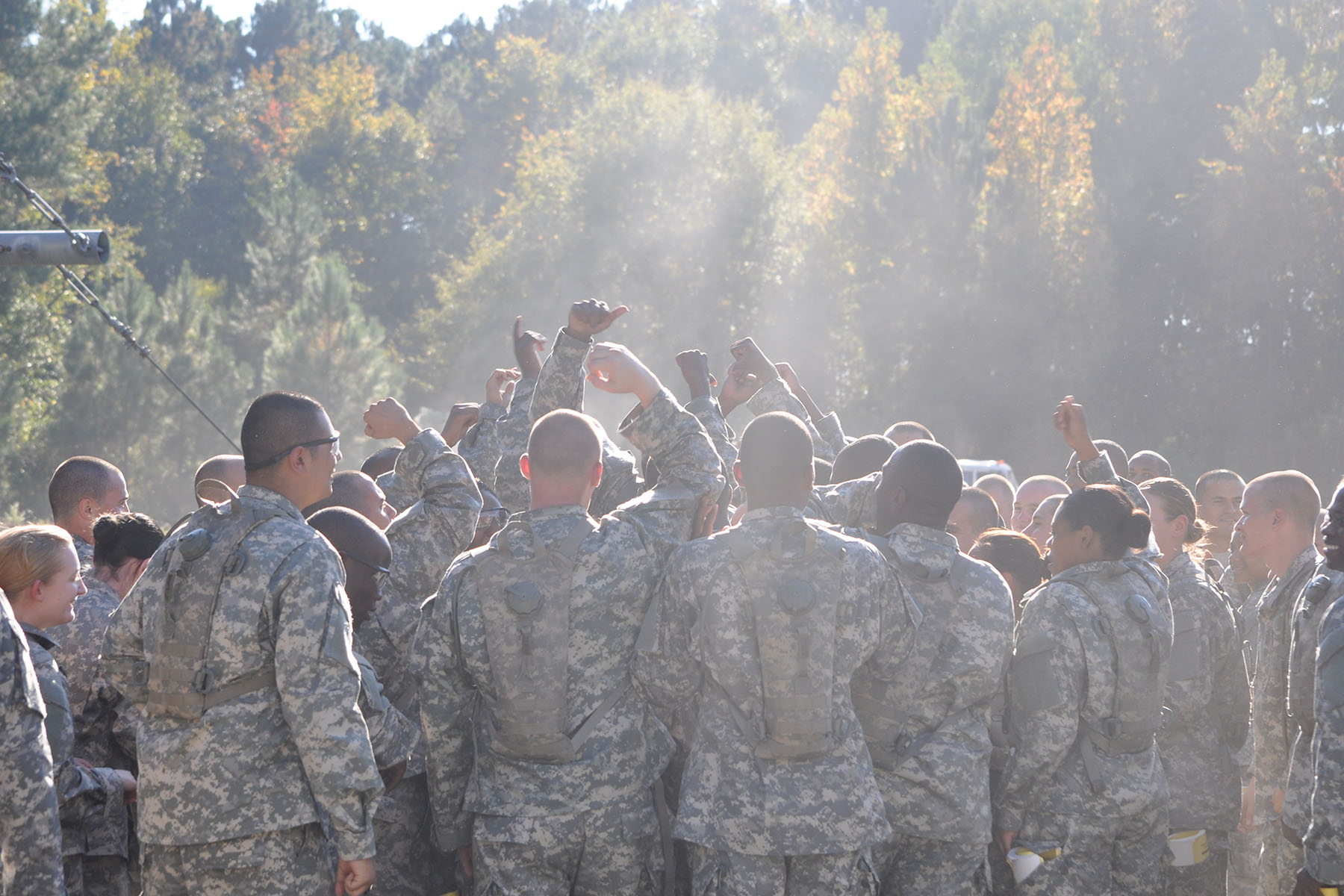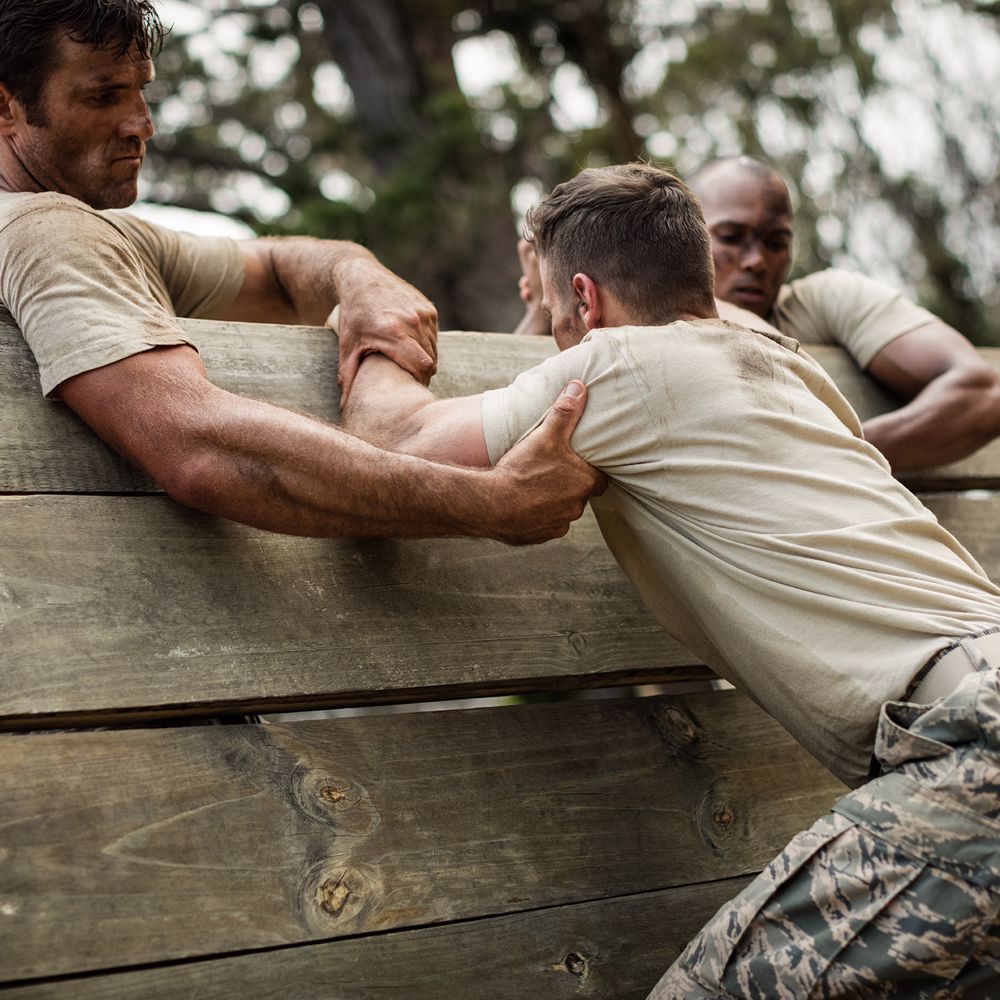Army Boot Camp Missouri - Fort Leonard Wood is a military facility in Missouri. From a small basic training base, it has grown into a base known as the Army's center of excellence, training 80,000 to 90,000 soldiers annually. Among the installation's training facilities are the Noncommissioned Officer Academy (the largest in the Army), the US Army School of Engineering, the US Army Military Police School, and the Army Chemical, Biological, Radiological, and Nuclear School at Fort Leonard Wood. It is also home to three gender-integrated Basic Military Training Brigades and one of the US Army's five receiving stations.
The Fort Leonard Wood and Maneuver Support Center (MSCoE) mission statement states several things.
Army Boot Camp Missouri

The vision of Fort Leonard Wood and the MSCoE is to be the Army's center of excellence, where each team works in innovative ways to deliver the best personnel and services for today's operating environment, as well as for the Army. and create the conditions for success in case of future conflicts.
How To Take The Guesswork Out Of Army Basic Training
In addition to Fort Leonard Wood's mission and vision, the military base has defined its priorities. These are:
Like many other military facilities in the country, Fort Leonard Wood's history dates back to the days before World War II, when the United States was struggling to mobilize its military forces to defuse a global conflict in Europe. Asia. To achieve this goal, training centers were built to prepare for military service. A training facility, later known as Fort Leonard Wood, was built in Leon, Iowa, then moved to southern Missouri. The facility was originally named the Seventh Corps Training Center on December 3, 1940, but was later renamed Fort Leonard Wood in honor of the distinguished surgeon general who served the country for 40 years. Wood served as the commanding officer of the 1st U.S. Volunteer Cavalry, known as the Rough Riders, and was appointed second-in-command by Theodore Roosevelt. He ended up receiving the Congressional Medal of Honor for bravery.
Due to the urgent need to build a military base, the workers who built Fort Leonard Wood denied housing and other amenities even to those who built the facilities. More than 1,600 buildings were constructed during the six-month construction process. After the fort was built, soldiers were stationed there for training. The 6th Infantry Division was the first to be sent there. After that, the 8th, 70th, 75th and 97th divisions entered training. Non-divisional units were sent for training, especially field artillery training. In total, over 300,000 soldiers were trained at Fort Leonard Wood during World War II.
Fort Leonard Wood was originally built for infantry training and soon became a training ground for military engineers. Those sent to the base often received basic military training as well as engineering training. Soldiers' training time ranged from 8 to 14 weeks, depending on the need to replace Army engineers. Fort Leonard Wood would eventually train the engineers into soldiers who would be sent overseas for their missions.
The Army Is Notorious For Breaking Soldiers' Bodies. But It's Now Working On Ways To Prevent That
Fort Leonard Wood was almost overused during World War II, but after the war it became a quasi-governmental force and was finally decommissioned in 1946. Fort Leonard Wood was run by a minimal crew since it was filled with thousands of soldiers in its heyday. Although some of the buildings were used for training by some National Guard units, the Guards. Most of the unused land at the base has been leased to ranchers for cattle grazing.
Fort Leonard Wood reopened during the Korean War when the need for a large training facility resurfaced. As before, it served as a training ground for soldiers and military engineers heading to Korea. The 6th Armored Division served as a staff unit and was commanded by Major General Samuel Sturgis, an engineer who served under General Douglas MacArthur during World War II and would later be promoted to Chief Engineer.
After the Korean War, the Cold War and the renewed need for training centers led the Army to declare Fort Leonard Wood a permanent military base. The facility was eventually rebuilt to modernize the World War II-era structure. Military family units, a barracks complex, and recreational facilities were also built. Finally, Fort Leonard Wood not only provided basic military and engineering training, but also trained personnel in areas such as cooking, baking, mechanics, and operating motor vehicles. The US Army School of Engineers was moved from Fort Belvoir, Virginia, to Fort Leonard Wood in 1985, a plan that was proposed in the 1970s and took a decade to pass. Built at Fort Leonard Wood, the school was a state-of-the-art training and education facility completed in 1989. The base was reportedly used as a training center for troops stationed during and after the Vietnam War. During Operation Desert Shield and Desert Storm. Fort Leonard Wood is a major Army training post located in the heart of the Ozarks, Missouri. The closest cities are Waynesville, Missouri and St. Robert, Pulaski, Missouri. Waynesville has a population of 3,507 and is located on historic Route 66. St. Roberts has a population of 2,760 and is considered the city's business district. Both cities jointly own and operate a regional airport located at Fort Leonard Wood, the only available airfield in the region. Fort Leonard Wood covers an area of 63,000 acres and 98 square miles. The remote rural location is ideal for training sites and offers many hilly acres suitable for field training, but its remoteness has earned Fort Leonard Wood the nickname "Lost Fort in the Woods of Misery".

The post was built in 1940 and named after the then Chief of Staff General Leonard Wood. Its original purpose was as a World War II infantry training post. It changed in no time and became an engineering training ground. Future conversions and base closures combined to move the training school to Fort Leonard Wood, where the post became a training center for Chemical Corps and Police Corps students. The post later became a maneuver support center for the US Army. In 2009, the Maneuver Support Center was designated the Center of Competence, and the fort became the main combat training center for most of the Army's non-combat troops. In addition to basic training, the post also trains new 2nd Lieutenants in the branches of Engineer and Military Police, Basic Training for Level B Officers, Academy of Petty Officers, Warrior Leader Course and Advanced Leader Course. For Ordnance NCOs. It's safe to say that Fort Leonard Wood is the Army's training center for nearly every member of the Army at some point in their military career.
Houston Military Camp Obstacle Rentals
At one point in Fort Leonard Wood's history, the post was a railroad hub that connected the mail rail system to the regular commercial railroad. The link is still there, but it has been reduced to two engines powering 20 sidecars for transporting heavy equipment used for training operations.
Post Housing has 2,100 apartments in four separate neighborhoods. Units are available from 2 to 4 bedrooms. Most of the apartments are new or recently renovated and are very attractive. This means that housing is privatized and soldiers receive a basic housing allowance based on their rank and then pay rent to the company that operates the housing office. There may be a waiting period for direct accommodation. There are apartments and houses for rent nearby.
Pulaski County has seven school districts, all of which have a high percentage of students affiliated with Fort Leonard Wood. Two-thirds of Waynesville's school population is dependent on Fort Leonard Wood. Data from the Pentagon's most recent suicide report shows the number of suicides, suicide attempts and suicidal thoughts among new soldiers during their first six months of service. , broken down by place of initial training.
Fort Leonard Wood, Missouri, the Army's basic chemical engineering and military police training program, had the highest risk in 2019: 26 suicide attempts and 212 suicide attempts, with approximately 15,000 basic trainees participating each year. Data did not indicate whether the incident occurred during basic training or after soldiers completed initial training.
What Could You Send In An Army Basic Training's Package?
Army boot camp requirements, army boot camp graduation, army boot camp schedule, army boot camp dates, us army boot camp, missouri army boot camp, army boot camp exercises, doodle army boot camp, army boot camp 2020, boot camp army training, army boot camp georgia, army boot camp locations
0 Comments